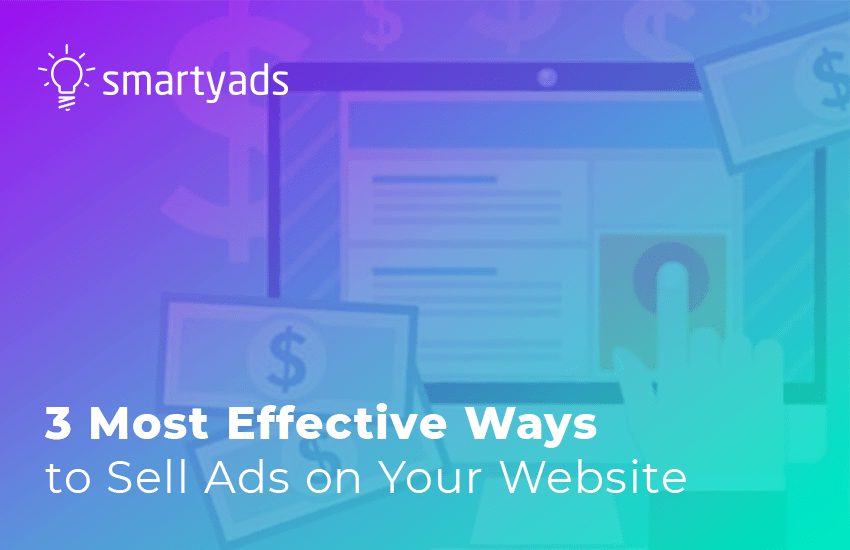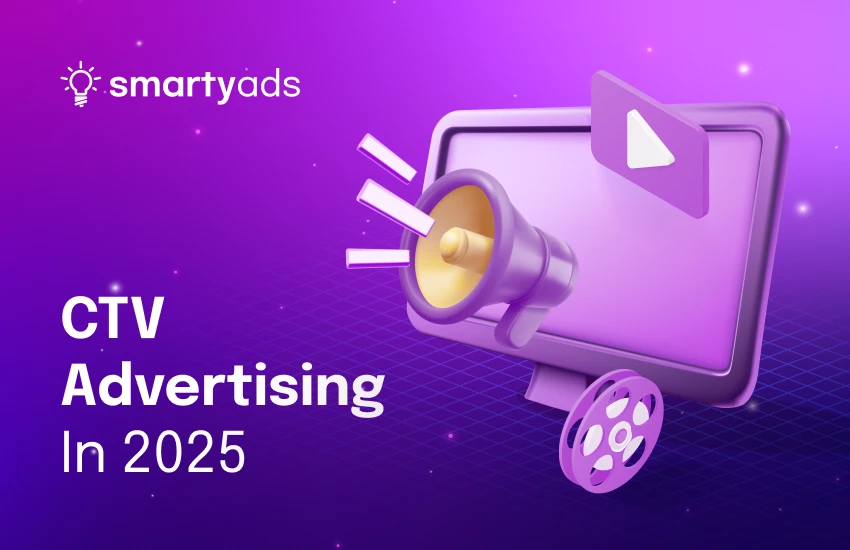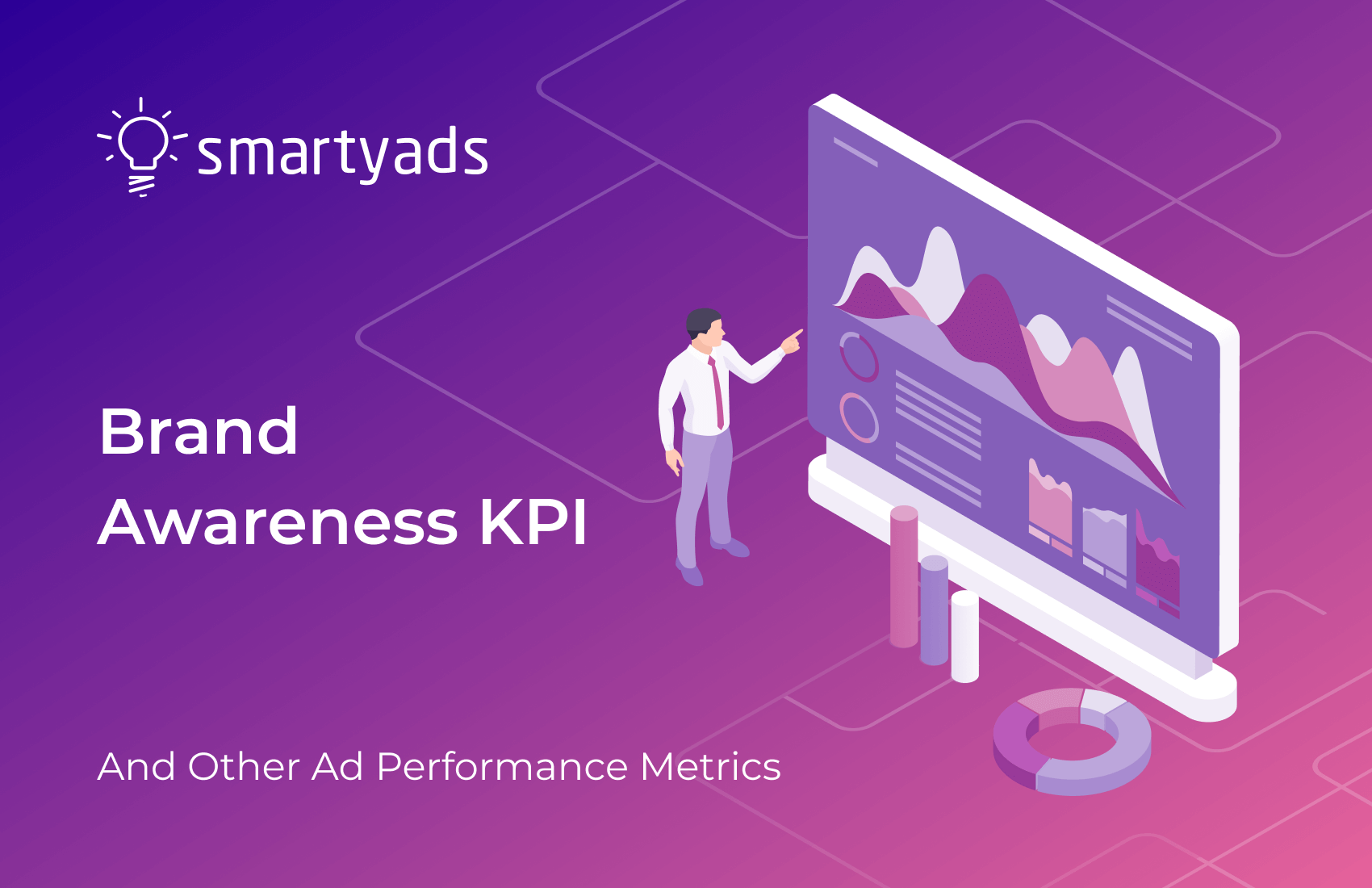I’ve been working in programmatic advertising for years, helping brands navigate complex ad environments and make sense of their data. I’ve seen how easy it is to pour budget into CTV campaigns without knowing what’s really working. And I’ve also seen what happens when measurement is done right — campaigns become smarter, better targeted, and way more effective.
That’s why I’m writing this article. To show you how accurate CTV measurement can completely change the game. We’ll go over why it matters, what to track, and how to turn insights into action. If you’re running CTV ads (or planning to) and you want better performance (not just more reports), this is for you.
You’ll learn:
- What makes measurement tricky in CTV
- CTV metrics that actually move the needle
- How good data helps with optimization and scaling
- What tools and strategies can make tracking easier
Let’s break it all down in plain language. No buzzwords, just practical stuff that works. Ready? Let’s go.

What is CTV measurement?
CTV measurement is how we track what’s really happening with ads shown on connected TVs. It helps us see who watched the ad, for how long, and what they did after. Basically, it’s the way we understand if the campaign worked or not. Without proper measurement, you’re flying blind. With it, you get data that helps improve targeting, budget allocation, and overall results. Simple as that.
How does CTV measurement work?
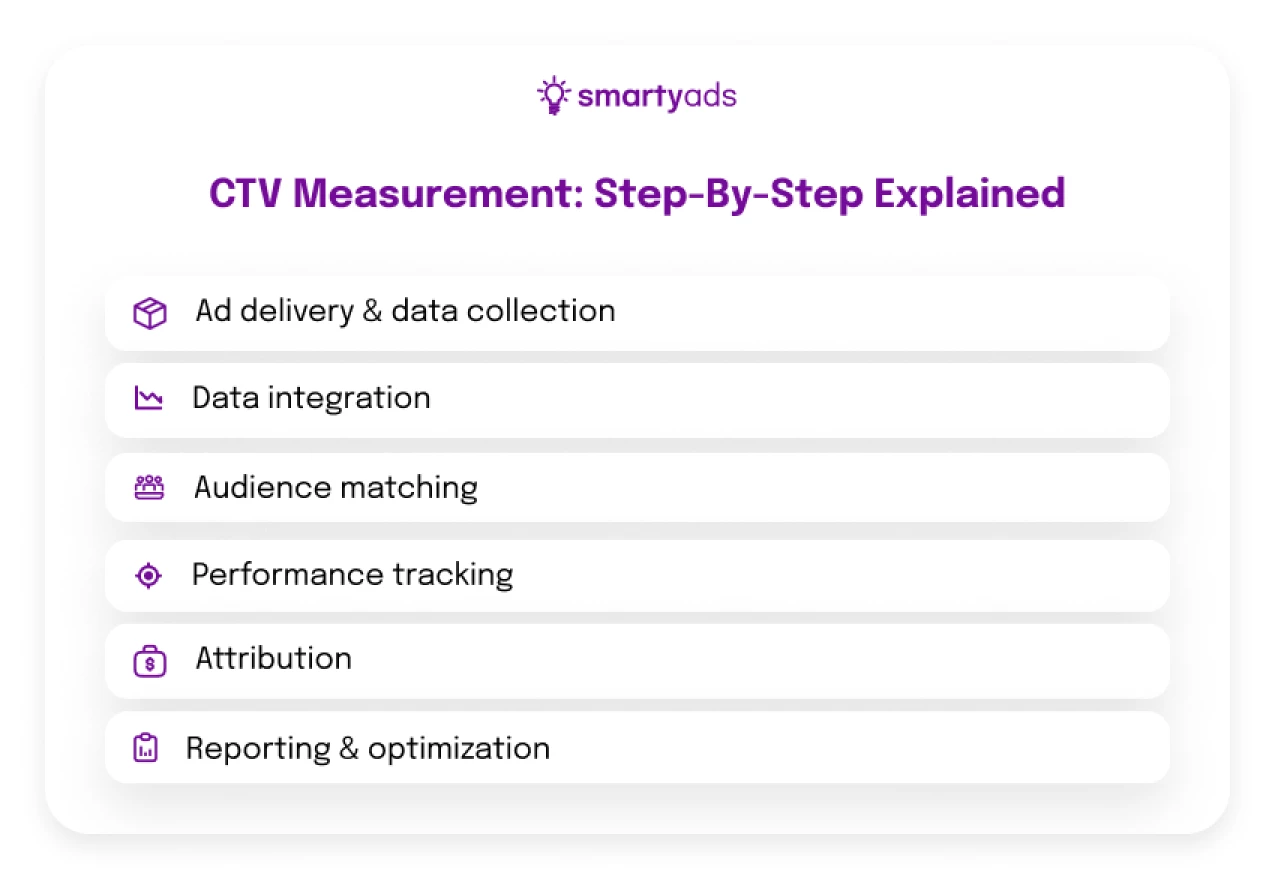
Let’s break down in a simple way how CTV measurement works. Here’s how the whole process usually goes, step by step, from the moment your ad appears on a screen to the moment you see the final report.
- Ad delivery & data collection
The ad gets shown on a connected TV. At the same time, basic data like time, device, and viewer behavior starts to get tracked.
- Data integration
This raw data is pulled from different platforms (like streaming apps, TV devices, and ad servers) and brought together in one place.
- Audience matching
The system tries to understand who saw the ad. It connects household-level data, anonymized IDs, and sometimes even third-party insights.
- Performance tracking
We see what viewers actually did. Did they watch till the end? Did they scan the QR code? Visit the website? This is where results come in.
- Attribution
It links the ad exposure to actions ( like purchases, visits, or app installs) so you know what impact the ad really had.
- Reporting & optimization
All that data turns into a report. That’s where you spot what worked, what didn’t, and what to tweak next time.
Why accurate CTV measurement matters
CTV advertising isn’t the future — it’s already here. And accurate measurement is what keeps everything on track.
The way people watch content has changed. They’re no longer glued to linear TV. They stream. They binge. They switch between platforms and devices without thinking twice. If we don’t measure properly, we miss all of that.
Add to that the gradual shift away from third-party cookies. It’s not happening overnight, but it’s clear we’re moving in that direction. Advertisers need to start relying more on first-party data and accurate measurement across channels like CTV.
Automation is also playing a bigger role. Campaigns are being optimized in real time. But without clean, accurate data? Even the smartest algorithms won’t help.
Accurate connected TV measurement isn’t just about reporting results. It’s about making better decisions now and making sure your strategy still works in six months, or a year from now.
It gives you control, clarity, and the power to scale what works. No guesswork. No waste. Just results that actually move the needle.
Key CTV metrics you need to track
If you want to know whether your CTV campaign is working…really working, you have to look deeper than just views. These are the CTV KPIs that actually matter:
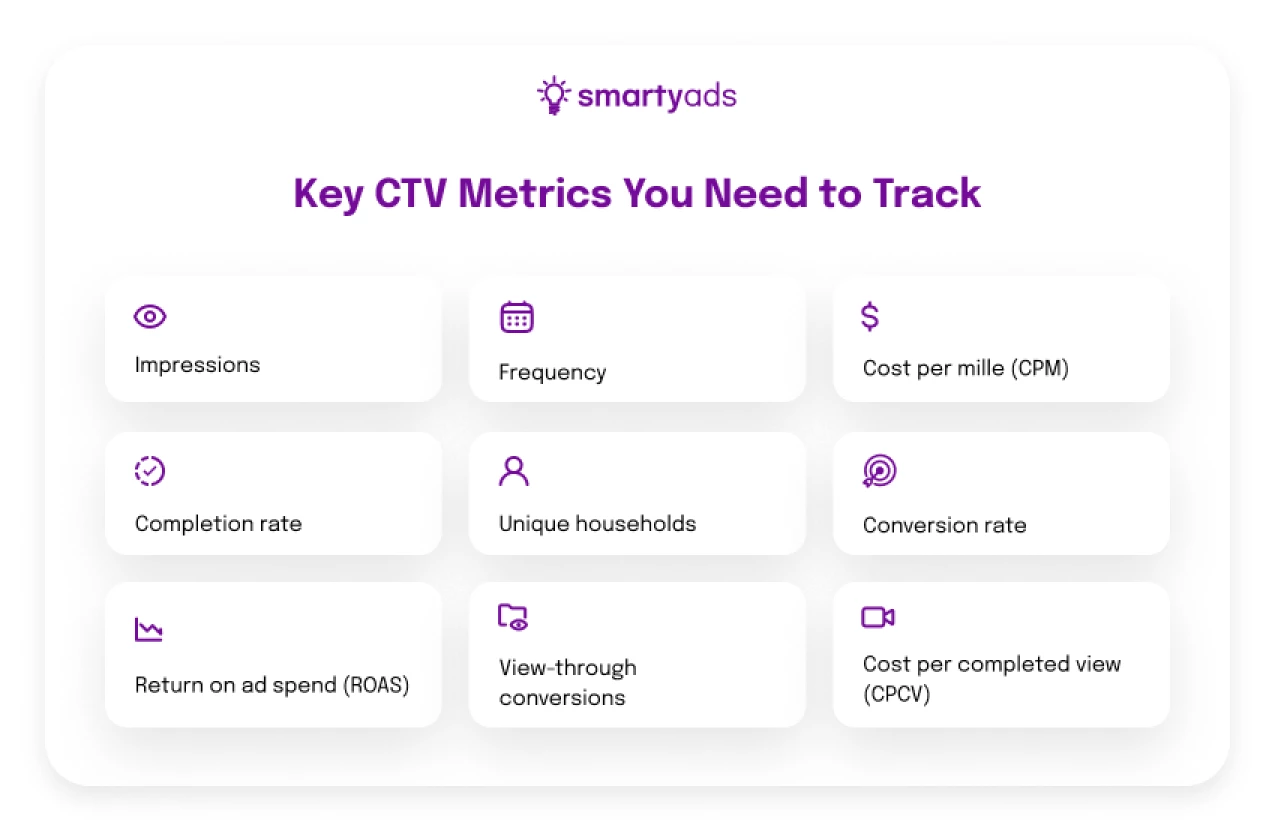
Impressions
This is how many times your ad appeared on someone’s screen. Each impression is a chance to grab attention. Maybe they saw it once. Maybe five times. It’s your basic reach. But impressions alone don’t show if people watched or cared.
Frequency
This tells you how often the same household saw your ad. One time usually isn’t enough. But if they see it too many times, they’ll start to tune out — or worse, get annoyed. You need to hit that sweet spot where it sticks, but doesn’t irritate.
Cost per mille (CPM)
CPM shows how much you're paying for every 1,000 impressions. It's a good way to compare spending across platforms. But cheaper doesn’t always mean better. You want a balance between cost and quality, not just low numbers, but real impact.
Completion rate
This shows what percent of viewers watched your ad till the very end. If the number’s high, it means people stayed with you. Maybe the ad was interesting. Or maybe they couldn’t skip it. Either way, it means your full message was delivered.
Unique households
This tells you how many different homes saw your ad. Not just how many times it played but where, and to whom. If impressions are high but this number is low, you’re likely showing the ad to the same people again and again.
Cost per completed view (CPCV)
This is how much you pay when someone watches the ad from start to finish. It shows the cost of real attention, not just a quick glance. The lower this number is, the better value you’re getting from your media spend.
Return on ad spend (ROAS)
ROAS is one of the key connected TV metrics to watch. It shows how much money you earned for every dollar spent. If you put in $1,000 and got $3,000 back, your ROAS is 3. Easy math, but super powerful when it comes to judging if your campaign was worth it.
View-through conversions
Not everyone clicks an ad right away. Some people watch, leave, and come back later to take action. This metric tracks that delayed response. It helps prove your ad made an impact, even if the results showed up a bit later.
Conversion rate
This tells you how many people took action after seeing your ad. Maybe they signed up. Maybe they bought something. This is the number that connects your creatives to real results. In the end, it’s what we all care about most.

Benefits of accurate CTV measurement for advertisers
When your measurement is on point, everything else starts to fall into place. Here’s what advertisers actually gain when they track the right way:
Smarter budget allocation
You stop throwing money into the dark. Accurate data shows you which platforms, creatives, or time slots actually bring results, not just impressions. You can shift your budget to what performs best and cut the waste without second-guessing yourself.
Improved audience targeting
When you know exactly who’s engaging with your ads, you can sharpen your targeting like never before. You reach the right people, at the right moment, with the right message. That means fewer wasted impressions and more impact.
Clearer campaign performance
You’re not stuck staring at empty numbers anymore. Completion rates, CPCV, ROAS, all of it comes together to show what’s truly working. You stop guessing, start seeing patterns, and know exactly where to make changes that matter.
Faster optimization
You don’t need to wait until the campaign is over to figure out what went wrong. With real-time or close-to-real-time data, you can make quick decisions on the fly. If something’s underperforming, you pause it. If something’s killing it, you boost it. Simple changes — big difference.
Stronger cross-channel strategy
CTV doesn’t live in a vacuum. People see your ad on TV, then grab their phone or laptop. When you measure CTV properly, you can connect the dots across channels. That’s how you build a strategy that actually follows the user journey, not just the media plan.
Better ROI
In the end, all that matters is what you get back. A strong strategy for CTV measurement helps you clearly see what drives results, and what’s just eating the budget. You stop wasting money on guesswork and start investing in what really works. That’s how you grow ROI without growing spend.
How to improve CTV measurement accuracy with SmartyAds
If you want better results, you need better data and a partner that helps you make sense of it. Here’s how advertisers can boost CTV measurement tracks, and how SmartyAds fits into the picture:
Use first-party data and identity graphs
First-party data is your most reliable source of truth. It shows real behavior, real users, not just assumptions. Identity graphs help link data points across devices and platforms. That means you can see the full picture of how someone interacted with your ad.
Better audience insights = more precise targeting and cleaner measurement.
With SmartyAds, you can tap into verified traffic sources and integrate with identity-based solutions that boost data accuracy across all channels including CTV.
Adopt real-time reporting dashboards
Real-time reporting lets you react fast. You can spot performance issues early, test changes, and see immediate results without waiting for end-of-campaign reports.
It helps prevent waste and gives you more control. SmartyAds provides live reporting dashboards that help advertisers monitor key metrics (impressions, completions, CPCV, and more) as the campaign runs. You don’t need to fly blind.
Combine CTV with geo-targeting
When you know where your viewers are, you can serve more relevant ads — and measure more accurately. Local targeting gives you clear signals on what’s working in different areas.
Geo-data improves attribution and adds context to campaign results. SmartyAds supports geo-targeted campaigns, even down to ZIP codes. That level of precision helps you match performance with location and optimize based on real demand.
Track cross-device behavior
Viewers often see your ad on TV but convert later on mobile or desktop. If you don’t track across devices, you miss that connection.
Cross-device tracking shows the full customer journey. SmartyAds offers cross-channel ad delivery and reporting, so you can follow users from the big screen to the small one and see how CTV actually drives results across the funnel.
Focus on viewability and completion rates
An impression only matters if someone actually sees it. Viewability and completion rates help you understand if people are paying attention or just skipping past.
These metrics directly affect ROI and campaign quality. With SmartyAds, you get access to premium, high-viewability inventory. Some platforms report up to 97% viewability and 98% completion which means your message gets through.
Consider SmartyAds your trusted CTV partner
SmartyAds has been building programmatic ad tech since 2013. We help advertisers run smarter, data-driven campaigns across channels including CTV. Our platforms serve over 1.1 billion impressions monthly across 40+ countries.
We’ve worked with brands, agencies, and media buyers on CTV campaigns that needed real results, not just reach. From optimizing budgets to improving ROAS and viewability, we’ve helped solve complex challenges with clear, practical solutions.
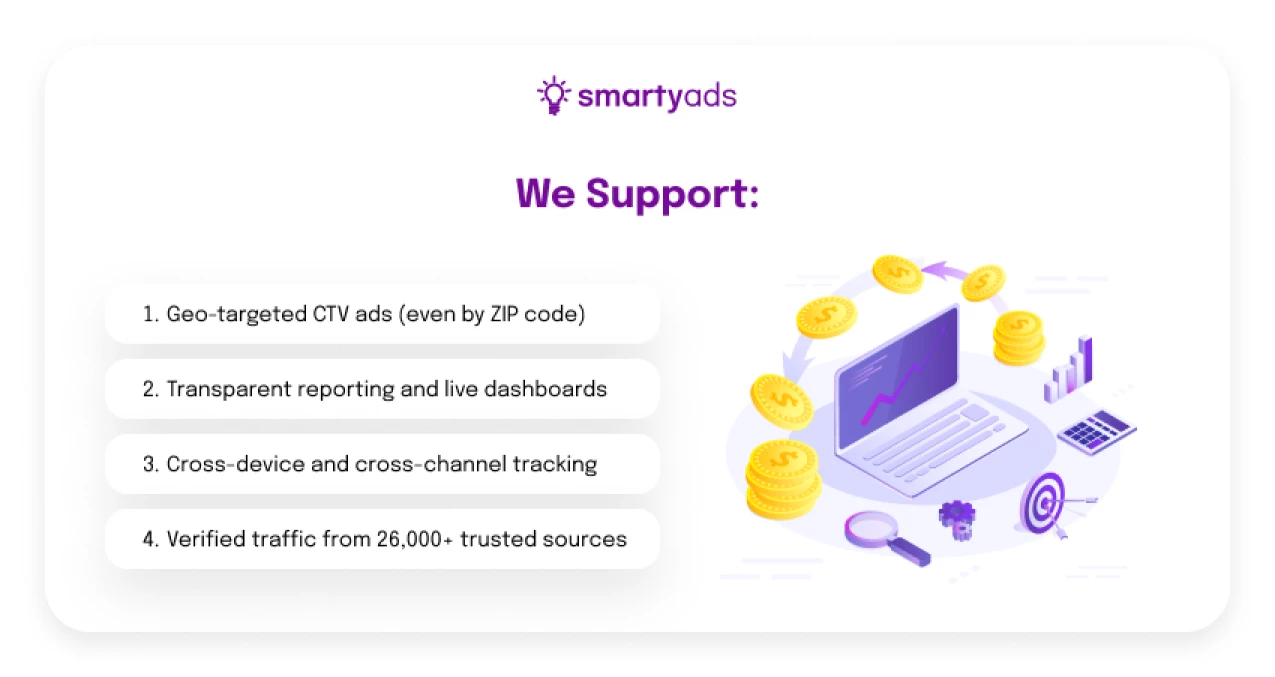
You get premium inventory, real-time data, and a team that’s ready to help you scale what works. Want proof? Check out our case studies and portfolio.
Register on our innovative DSP to run CTV campaigns that are actually measurable.

FAQ
CTV measurement gives you real-time, user-level data, while traditional TV relies on broad estimates. With CTV ad campaigns, you can track impressions, completions, and conversions across devices, not just viewership.
Look for platforms with real-time dashboards, geo-targeting, and cross-device tracking. Tools like SmartyAds DSP help you run more precise CTV campaigns with clean, actionable data. Explore our solutions →
The best platform is one that combines transparency, premium inventory, and full-funnel tracking. SmartyAds supports advanced CTV ad campaigns with live reporting and smart optimization tools. See our platform in action →
.webp)
